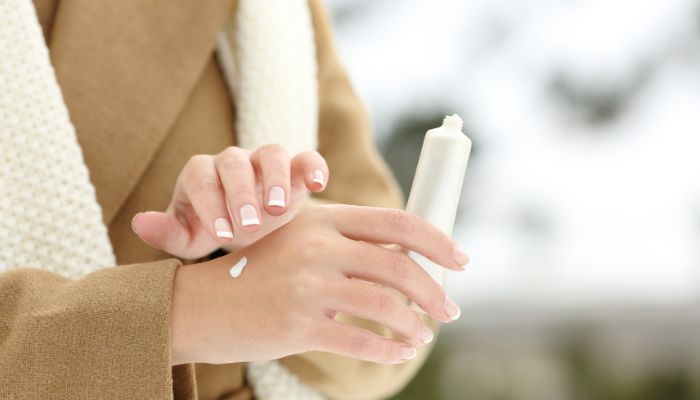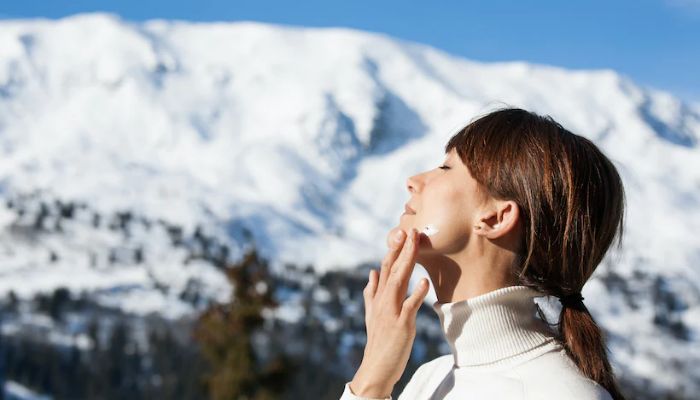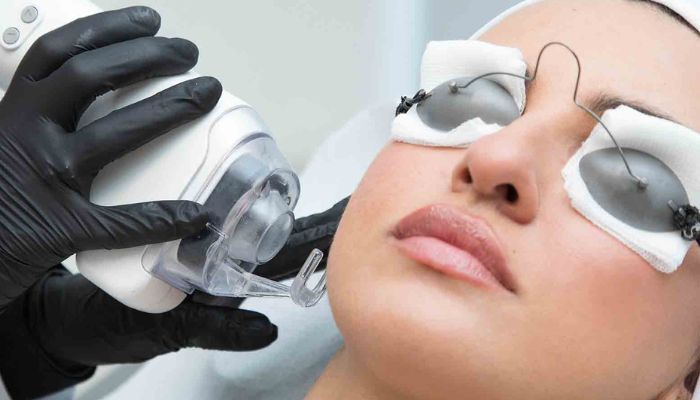As the days grow shorter and the temperatures drop, many of us begin to bundle up in our cozy winter attire, welcoming the cold weather with open arms. While we might be tempted to leave our sunscreen behind with the memories of summer, the truth is that protecting our skin from the sun’s harmful rays remains just as crucial in the colder months. In this blog post, we will explore why sunscreen is not just a summer essential but a year-round necessity. From the deceptive nature of the winter sun to the reflective properties of snow and the potential risks of neglecting sun protection, we will uncover the science and practical reasons behind the call for winter sunscreen use. So, before you embark on your winter adventures or simply step outside for your daily routine, let’s dive into why you still need sunscreen even when it’s cold outside. Your skin will thank you for it.
Table of Contents
The Sun's UV Rays Don't Take a Winter Break
In the cold winter months, it’s easy to overlook the sun’s presence and the potential harm its UV rays can cause. It’s crucial to understand that UV radiation consists of two main types: UVA and UVB. While UVB rays are often associated with sunburn and are typically stronger in the summer, UVA rays, which penetrate the skin more deeply, are present throughout the year and are just as harmful. Even in cold weather, these UVA rays can cause substantial damage to your skin, leading to issues like premature aging, wrinkles, and, more alarmingly, an increased risk of skin cancer. The sun’s UV rays don’t discriminate by season, and protecting your skin from them with sunscreen is a year-round necessity for maintaining healthy and youthful skin while reducing the risk of skin-related health problems.
The Impact of Snow and Ice
Snow and ice in cold environments play a significant role in the need for sunscreen during winter. Firstly, snow and ice act as natural reflectors, bouncing UV radiation from the sun back onto our skin. This reflective effect amplifies the exposure to UV rays, potentially leading to increased skin damage. To emphasize the importance of this, consider this: fresh snow can reflect up to 80% of UV radiation, significantly enhancing your sun exposure, even when you’re bundled up in winter attire. The consequences of this increased exposure are not to be underestimated. Prolonged UV exposure in winter can lead to sunburn, premature aging, and, in the long run, an elevated risk of skin cancer. So, even when it’s cold outside and the sun seems less intense, remember that the reflective qualities of snow and ice are working against you, underscoring the necessity of using sunscreen in cold weather to safeguard your skin.

Benefits of Wearing Sunscreen in Winter
Wearing sunscreen during the winter months offers a trifecta of benefits for your skin. Firstly, it helps prevent premature aging by shielding your skin from the harmful effects of UV rays, which can lead to wrinkles, fine lines, and age spots. Secondly, sunscreen helps maintain skin hydration by forming a protective barrier against the drying effects of cold winds and low temperatures. Lastly, it’s a vital safeguard against painful and often underestimated winter sunburn. So, make sunscreen a daily habit to preserve your skin’s youthfulness, moisture, and overall health, even in the coldest of seasons.
Common Misconceptions About Sun Protection During Winter
Let’s address some prevalent myths:
Tanning Without Burning: Even if you tan without burning, it doesn’t mean you’re safe from sun damage. A tan is your skin’s response to UV damage, signifying harm to your skin cells. Sun protection is essential for everyone, regardless of their tendency to tan or burn.
Cosmetics with SPF and Sunscreen: Unless cosmetics are explicitly labeled with an SPF30 or higher rating, you should use additional sunscreen beneath your makeup, especially if you plan to spend extended time in the sun. For prolonged sun exposure, a separate sunscreen is recommended, and it should be reapplied every two hours. Most cosmetic products provide limited or lower-than-recommended SPF protection.
Fake Tan and Sun Protection: Fake tanning lotion does not enhance the skin’s ability to protect itself from the sun. Using fake tans should not be considered a substitute for sun protection. While some fake tans may have SPF ratings, they should not be relied upon for extended sun protection.
SPF50+ vs. SPF30: SPF50+ sunscreen does not allow you to stay in the sun for a longer time than SPF30. Sunscreen is not a guarantee of prolonged sun exposure. SPF50+ sunscreen offers only slightly better protection against UVB radiation, which causes sunburn and contributes to skin cancer risk. SPF30 sunscreens filter about 96.7% of UV radiation, while SPF50+ sunscreens filter 98%.
Car Windows and Sunburn: You can indeed get sunburned through a car window. Untinted glass in car side windows reduces but doesn’t entirely block UV radiation. Spending time next to an untinted side window or with windows down on sunny days can expose you to harmful UV rays.

Selecting the Right Sunscreen for Cold Weather
Selecting the right sunscreen for cold weather is essential to ensure proper protection for your skin. When it comes to sunscreen types, you have two main options: chemical and physical sunscreens. Chemical sunscreens work by absorbing UV rays, while physical sunscreens create a barrier that reflects the sun’s rays. In cold weather, either type can be effective, but we recommend using physical sunscreens instead of chemical sunscreen. Physical or mineral sunscreen uses safe, natural ingredients, making it a great choice for those concerned about the potential harm from chemical sunscreen ingredients. Opt for a broad-spectrum sunscreen to guard against both UVB and UVA rays, as both can harm your skin even in winter. To combat the drying effects of cold weather, choose a moisturizing sunscreen that will keep your skin hydrated and protected from getting chapped. Also, to combat the drying effects of cold weather, choose a moisturizing sunscreen that will keep your skin hydrated and protected from getting chapped. Ultimately, though, the best winter sunscreen for you is the one that best meets your unique needs.
For example, if you’re active in winter sports or like to spend a lot of time outside during the colder season, you need a sunscreen that’s water- and sweat-resistant. Additionally, if you’re at higher altitudes, such as a ski resort, it’s advisable to look for a sunscreen with an SPF of 50 or higher for the best protection against reflected rays. Making an informed choice when selecting your winter sunscreen will ensure your skin remains healthy and safeguarded in the colder months.

Additional Protection Measures
In addition to using sunscreen, there are several other essential protective measures to safeguard your skin during cold weather. Your first line of defense against sun damage in cold weather is clothing. While it’s often easier to cover up in the winter due to the chilly temperatures, it’s important to remember that the face, head, and neck tend to remain exposed year-round, and these areas are particularly vulnerable to UV damage. Before venturing out, don’t forget to protect these areas with UV-blocking sunglasses and a broad-brimmed hat. Sunglasses not only shield your eyes but also combat the harsh glare that can be amplified by snow. Additionally, a hat serves a dual purpose – it keeps you warm and prevents UV rays from harming your scalp. For comprehensive protection, remember to apply sunscreen to all exposed skin, including your lips. To make sure your sunscreen is fully effective, apply it at least 20 minutes before heading outside to allow it to properly absorb into your skin and provide the intended defense against harmful UV radiation.
Conclusion
In conclusion, it’s clear that sunscreen is not just a summer essential, but a year-round necessity. Even in cold weather, our skin is exposed to harmful UV rays that can lead to long-term damage, premature aging, and an increased risk of skin cancer. While the winter months might make us feel less vulnerable to sunburn, the truth is that UV radiation is still present, and it can be even more damaging when reflected off snow or ice.
By incorporating sunscreen into your daily skincare routine, you’re taking an essential step in protecting your skin and maintaining its health and youthful appearance. So, don’t let the chilly temperatures fool you into thinking that sunscreen is only for the beach. Make it a year-round habit, and your skin will thank you for it.
Remember, not all sunscreens are created equal. Choose a broad-spectrum sunscreen with an SPF of at least 30, and make sure to apply it generously to all exposed areas of your skin. Your future self will be grateful for the extra effort, as you enjoy healthy, radiant skin throughout the year.



